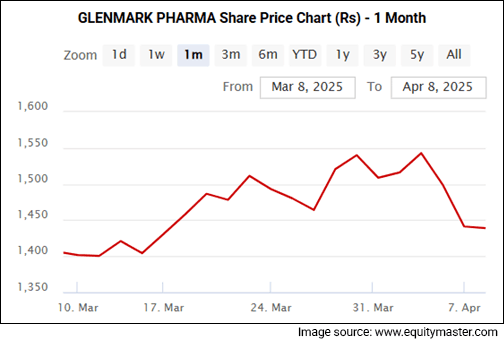Sensex Today Ends 379 Points Lower; Nifty Below 22,400
After opening the day lower, the Indian benchmark fell further as the session progressed, eventually closing more than 350 points lower.
Indian stock markets declined on Wednesday after the Reserve Bank of India Monetary Policy Committee unanimously decided to cut the repo rate by 25 bps to 6%.
At the closing bell, the BSE Sensex closed higher by 379 points (down 0.5%).
Meanwhile, the NSE Nifty closed 137 points lower (down 0.6%).
Nestle, HUL, and Titanare among the top gainers today.
Wipro, SBI, and Trent, on the other hand, were among the top losers today.
The GIFT Nifty was trading at 22,465, down by 133 points at the time of writing.
The BSE MidCap index ended 0.7% lower, and the BSE SmallCap index ended 1.1% lower.
Sectoral indices were trading mixed on Wednesday, with stocks in the FMCG sector and auto sector witnessing buying. Meanwhile, the stocks in the metal sector and realty sector are witnessing selling pressure.
The rupee is trading at 86.7 against the US$.
Gold prices for the latest contract on MCX are trading 2.1% lower at Rs 89,522 per 10 grams.
Meanwhile, silver prices were trading 1.7% lower at Rs 90,263 per 1 kg.
Why Glenmark Pharma Share Price is Falling
In news from the pharma sector, the shares of Glenmark Pharma crashed over 6% on 9 April after the US pharma regulator announced that 39 drugs manufactured by the company, most of which were made at its Pithampur plant in Madhya Pradesh, have been recalled from the American market owing to GMP concerns.
The shares of the company were trading at Rs 1,353 apiece.
The USFDA enforcement order said that the recall was a voluntary one, issued by the firm itself on March 13 this year.
The pharma giant has seen a strong downturn in its share price recently, falling over 13% in the last five sessions.

Glenmark Pharma is actively involved in the discovery of new molecules, NCEs (new chemical entity) and NBEs (new biological entity).
It develops pharmaceutical product formulation and active pharmaceutical ingredients in regulated and semi-regulated markets.
The company has several molecules in various stages of pre-clinical and clinical development focused in the areas of oncology, respiratory, and rermatology.
Its branded generics business has a significant presence in markets across emerging economies, including India.
Why Paint Stocks are Rising
Moving on to news from the paint stocks, shares of paint players soared in the afternoon session on 9 April, despite a muted market sentiment, as crude oil prices cooled off significantly.
Brent crude prices dipped below $62 per barrel, extending a decline of over 30% in the last year. Morgan Stanley has lowered its Brent estimates for the remainder of the year, now expecting the benchmark to trade in the US$ 60s during the second half of 2025.
India, which relies on imports for 85% of its crude needs, stands to gain from the price drop, as do industries that use crude derivatives.
Lower crude prices translate to softer input costs for paint companies like Asian Paints, boosting gross margins and profitability.
If the trend persists, it could also lead to more competitive consumer pricing.
Crude oil prices affect the decorative paint business more than any other because it is a raw material-intensive industry. The manufacture of paint requires more than 300 items, most being petroleum-based. Raw material accounts for 55-60% of input costs and directly impacts gross margins.
Over the past year, Asian Paints shares have fallen 15% in trade. Berger Paints have performed slightly better, falling three percent during the same time. Kansai Nerolac shares have fallen 12 percent during the same time period.
Brent crude is also a major source of synthetic rubber and other petrochemical products used in tyre manufacturing. As crude prices rise, the cost of these raw materials gains, increasing production costs for tyre companies.
Why Banking Stocks are Falling
Banking stocks declined up to 4% on Wednesday despite the Reserve Bank of India (RBI) reducing the repo rate by 25 basis points to 6% and shifting its monetary policy stance from 'neutral' to 'accommodative.'
Public sector banks were among the top losers, with Bank of India, Union Bank of India, Indian Bank, and Bank of Baroda falling nearly 4%. Canara Bank, Punjab National Bank, and State Bank of India also dropped between 1.5% and 2%.
Among private banks, Bandhan Bank, RBL Bank, YES Bank, and ICICI Bank slipped between 1% and 3.5%.
More By This Author:
Sensex Today Trades Lower; Nifty Below 22,400; Infosys Drops 3%
Sensex Today Rallies 1,089 Points; Nifty Above 23,500
Sensex Today Rallies 950 Points; Nifty Above 22,400
Disclosure: Equitymaster Agora Research Private Limited (Research Analyst) bearing Registration No. INH000000537 (hereinafter referred as 'Equitymaster') is an independent equity ...
more


